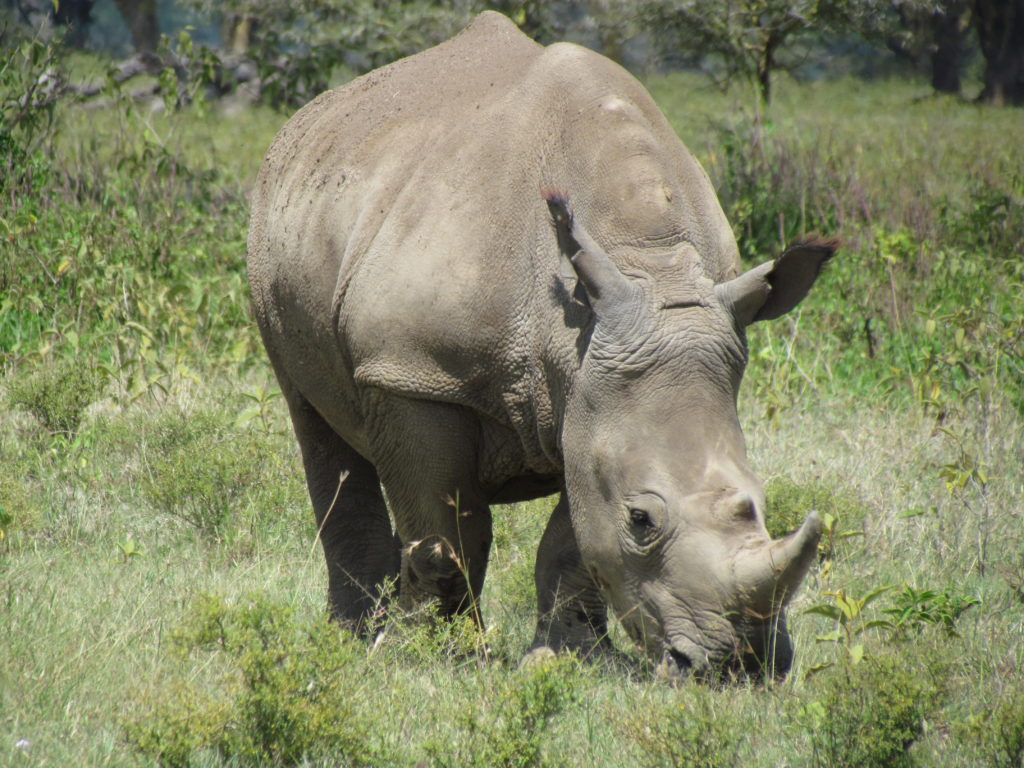You know there are five rhino species, and the white rhino is the largest. The white rhino is further split into two subspecies, the southern and northern. While you can tell the black and white rhinos apart, you’re wondering, what is the difference between the southern and northern white rhino?
Aside from living in different parts of Africa, they have slight differences in their head and teeth shape, amount of hair, and skin folds. Generally, the southern white rhinos are hairier and larger than the northern white rhinos.
Here’s a deeper look into their differences that’ll help you enjoy your safari more.
Physical differences
Although it is difficult to distinguish between the two subspecies visually, there are subtle differences. Southern white rhinos are generally larger, with adult males averaging about between 1,700 kg and 2,700 kg while females grow up to 2,000 kg. Northern white rhinos are slightly smaller, with males averaging between 1,400 kg and 1,600 kg (sadly, none are alive due to poaching activities).

The Southern white rhino typically has a broader, concave back and a more pronounced shoulder hump, while the Northern white rhino has a straighter back and a flatter hump. The Southern white also tends to have a more pointed, sharp-edged mouth, whereas the Northern white has a wider, flat mouth.
Population and distribution
The most striking difference is the population size and distribution of the two subspecies. Tragically, as of 2018, there are only two known Northern white rhinos left in the world, both females, named Najin and Fatu, residing under 24-hour armed guard at Ol Pejeta Conservancy in Kenya. The females are the daughter and granddaughter of Sudan the last living male that died of natural causes.
In stark contrast, the Southern white rhino has seen a significant conservation success story, with its population bouncing back from a mere 50 individuals in the late 19th century to around 21,000 today, primarily in South Africa but also in Botswana, Namibia, Swaziland, and Kenya.
Behavioral differences
Behavioral distinctions between the two subspecies are subtle but exist. The Southern white rhino is more sociable and often seen in groups called ‘crashes.’ In contrast, Northern white rhinos tend to be more solitary or seen in smaller groups, typically of a mother and her calf.
Moreover, Southern white rhinos are semi-nomadic, often covering great distances in search of food and water, while Northern white rhinos are generally more sedentary, staying in one area with plentiful resources.
Conservation status
The two surviving northern white rhino is are ‘the living dead’, since they are unable to reproduce naturally. The older rhino has bad back legs, so she cannot support the weight of a calf and hers, while her daughter has internal problems that make her incapable of carrying a pregnancy.
A glimmer of hope lies in advanced reproductive technologies, such as in-vitro fertilization (IVF) and stem cell research, which may one day revive the subspecies. The main challenge scientists are having is that complications can arise from artificial insemination. Past attempts have failed, given the wound created causes heavy bleeding and death. Despite these setbacks, interbreeding programs are still ongoing, and one of these surviving females may save their species.
Meanwhile, the Southern white rhino is classified as Near Threatened. Despite their impressive recovery, they face persistent threats, including habitat loss and poaching for their horns, emphasizing the continued need for stringent conservation efforts.
Conclusion
The white rhinoceros, both the Northern and Southern subspecies, are living testaments to the wonders of the natural world and our duty to protect them. Capture Kenya safaris offer an opportunity to witness these incredible creatures in their natural habitat and, in doing so, contribute to their conservation. Every visit to our vast and beautiful landscapes helps.
